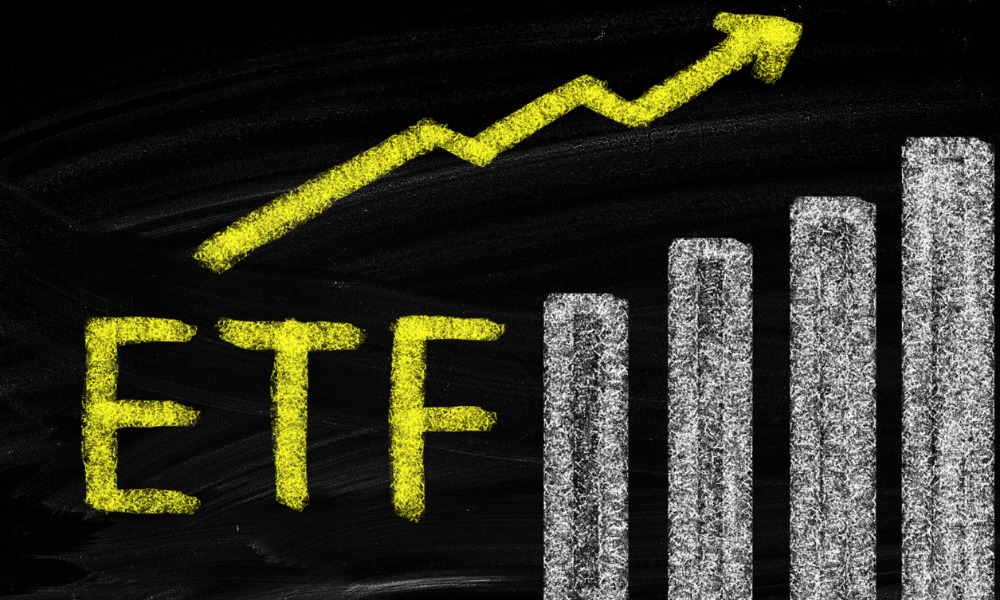ETF expert says advisors face a delicate balancing act with Canadians likely hit hardest by asset class struggles

Fixed-income ETFs are licking their wounds right now as rising rates hammer returns. With expectations high that inflation will climb on the post-pandemic recovery and a $1.9 trillion stimulus from the U.S., growth is poised to hit levels not seen for decades.
With GDP numbers set to rise, therefore, interest rates have risen rapidly, significantly impacting the returns on most investment grade fixed income products, whether it's funds or ETFs, in Canada and the U.S. Many in the Canadian investment grade category are posting year-to-date losses in the -4% to -5% range, a hammer blow to an asset class that is viewed as a low-risk safe haven.
Mark Noble, EVP, ETF Strategy, Horizons ETFs, told WP these losses have not been seen for the better part of a decade and that, by using ETFs as a proxy, Canadian investors have about 33% of their assets in fixed income, compared to approximately 18% in the U.S. Noble believes the speed with which rates have risen in the past six to eight weeks has taken investors by surprise.
“There was a view that interest rates at some point in time were going to have to come off their historical lows," he said. "Go back to April, 2020, and interest rates were basically the lowest they'd ever been on government bond rates. If you look at the Canadian five-year bond rate, it was around 30 basis points at one point in time.
“We had to expect at a certain point that if we were going to see a recovery from the pandemic and if things were going to improve like hopefully they will and should, then you should see a rise in interest rates.
“But the velocity with which this has happened over the past six to eight weeks has really taken all investors of all levels, whether they're portfolio managers or retail investors, by surprise."
Faced with this dilemma, what should advisors do to counter this fast-evolving scenario? There is no easy answer and many pundits have been describing this environment as one of the toughest ever for fixed income investors.
For example, most of a Canadian advisor’s clientele are 60-70 years old, with the Boomers a large demographic. Not too long ago, a $1 million portfolio could generate $40-50,000 through “risk-free” products. Now, that same portfolio is likely producing half of that at best, cost of living has certainly not decreased and the risk level of the fixed-income investor has not changed.
Noble said: “If you stretch for yield to increase the income on the fixed income portion of the portfolio, then you're dramatically changing your risk profile.
“Advisors can revisit the portfolio allocation of their clients to try to figure out how they create a framework where they don't change the risk profile but are able to generate the 3-4% that most investors are banking on to exist in retirement, or exist as an adult."
One option would be increasing your allocation to U.S. Treasuries, which are probably the number one risk-off asset class, Noble added. They don’t yield much but they do protect against the sort of downturn we saw a year ago. By improving the risk profile, you could then take existing capital from the fixed-income bucket, move it into equities and look to purchase dividends or preferred shares.
“[That means you can look for] something that's yielding higher, but have more of a barbell approach where it's protected by the lower risk on the Treasury,” Noble said. “That’s one way you can try to get to your 4%.”
Another tactic would be to shorten duration on the portfolio, with duration currently the number-one risk factor. Interest rates have actually declined on the short end of the curve, where on the five-year-plus, they’ve gone up. Most investors in the ETF space have duration risk in their portfolios.
Noble explained: “The most straightforward way to reduce the risk outside of maybe looking at treasuries, is by reducing the duration, and we're already seeing a lot of inflows coming in from retail advisors, who are moving towards shortening the duration. This is a risk that potentially persists for the next six to 12 months, until people can ascertain what type of growth rate and what kind of impact the stimulus will have on the global economy.
“Will we actually be looking at an inflationary environment? I don't have an opinion on that but that's what the market is pricing in.
“Conversely, it could go the other way too if we don't have inflation, in which case you're definitely going to want to have fixed-income allocation, and you'll get capital appreciation. It's probably the most challenging time in history to be a fixed income investor, certainly in modern times.”



